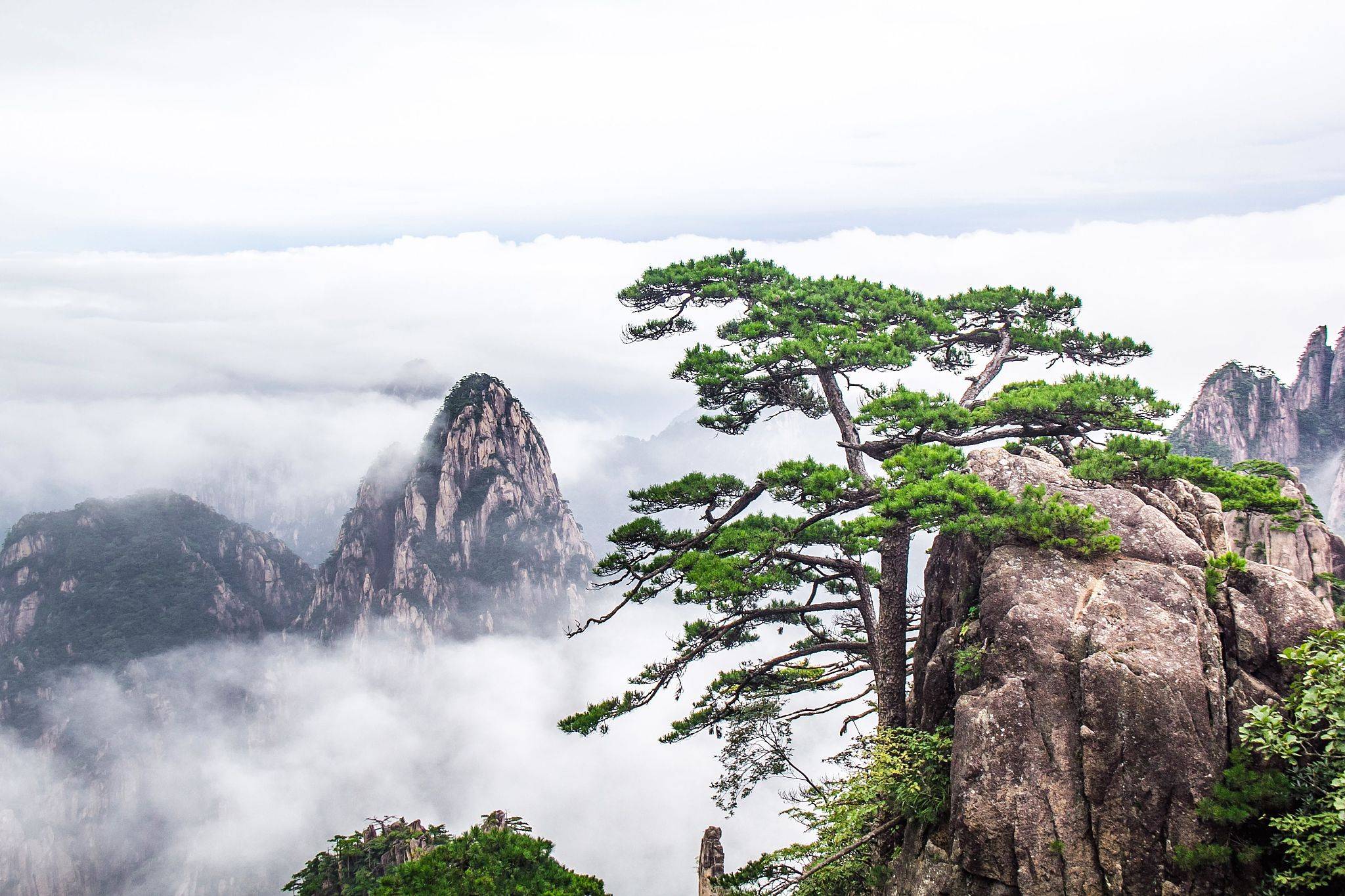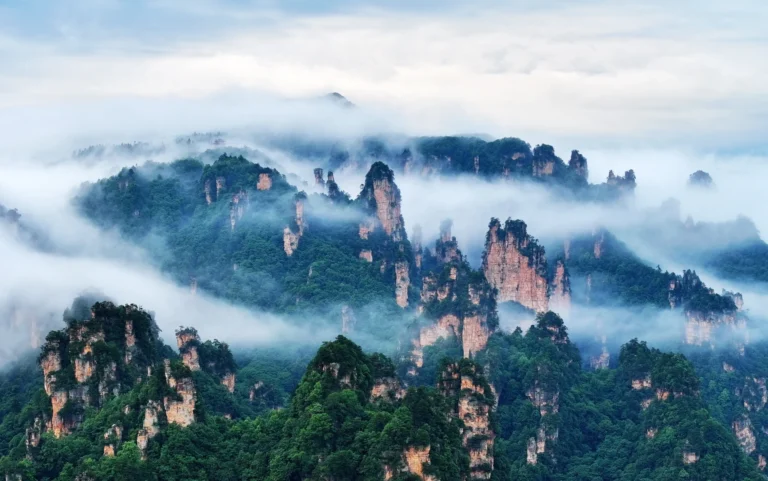Mount Huangshan: A Complete Guide to China’s ‘Loveliest Mountain’
We have guided travelers through China for years. Many landscapes have left us breathless. But Mount Huangshan is different. It’s not just a mountain. It’s a living, breathing ink-wash painting. A place where granite peaks pierce a sea of clouds. Where ancient pines cling to cliffs with impossible grace.
This is not just another travel guide. We want to share our deep knowledge of Huangshan. We will take you beyond the postcards. We will show you its soul. This guide is based on our team’s countless visits and the latest information for 2025. We will cover everything you need to know. From planning your route to finding the best spot for sunrise.
Let’s explore the Yellow Mountain together.
Quick Facts
Location: Anhui Province, eastern China.
UNESCO Status: World Heritage Site since 1990.
Elevation: Highest peak, Lotus Peak, at 1,864 meters (6,115 feet).
Known For: Stunning granite peaks, pine trees, hot springs, and “sea of clouds.”
Four Wonders: Oddly-shaped pines, grotesque rock formations, cloud seas, and hot springs.
Area: Core scenic area covers about 160.6 square kilometers.
Climate: Humid subtropical, with misty and foggy conditions often creating dramatic views.
Cultural Significance: Inspiration for traditional Chinese painting and poetry, especially in the Shanshui style.
Tourist Access: Cable cars and hiking trails, with key spots like Bright Summit and Flying-over Rock.
Biodiversity: Home to unique flora and fauna, including rare monkeys and birds.
Best Time to Visit: Spring (April-May) or autumn (September-October) for clear views and mild weather.
Historical Note: Named “Yellow Mountain” after Emperor Huang Di, a legendary figure in Chinese mythology.
Table of Contents
History and Cultural Significance: The Emperor’s Mountain

Mount Huangshan was not always called this. For centuries, it was known as Yishan (Mount Yi). Its story changed in the year 747 AD during the Tang Dynasty.
Legend says the Yellow Emperor (Huang Di), a mythical ancestor of the Chinese people, came here. He was said to have cultivated his moral character. He also made powerful elixirs of immortality on the mountain. To honor him, Emperor Xuanzong officially renamed it Huangshan (The Yellow Mountain).
This act transformed the mountain. It became a sacred place in Taoism. A destination for pilgrims, hermits, and poets seeking enlightenment. The great poet Li Bai wrote of it:
“One day I must climb the Brightness Apex, to see if the sky is really bluer from up there.”
Artists flocked to its peaks. They tried to capture its ethereal beauty on scrolls. The dramatic peaks and swirling mists became the standard of ideal beauty in Chinese art. To visit Huangshan is to walk through the landscapes you see in museums. It is a cornerstone of Chinese aesthetic culture.
Why is Mount Huangshan Worth Visiting? The Four Wonders
People often ask us, “What makes Huangshan so special?” The answer lies in its legendary “Four Wonders.” This is not just a marketing slogan. It is the essence of the mountain’s magic.
1. Oddly-Shaped Pines (奇松, Qí Sōng)
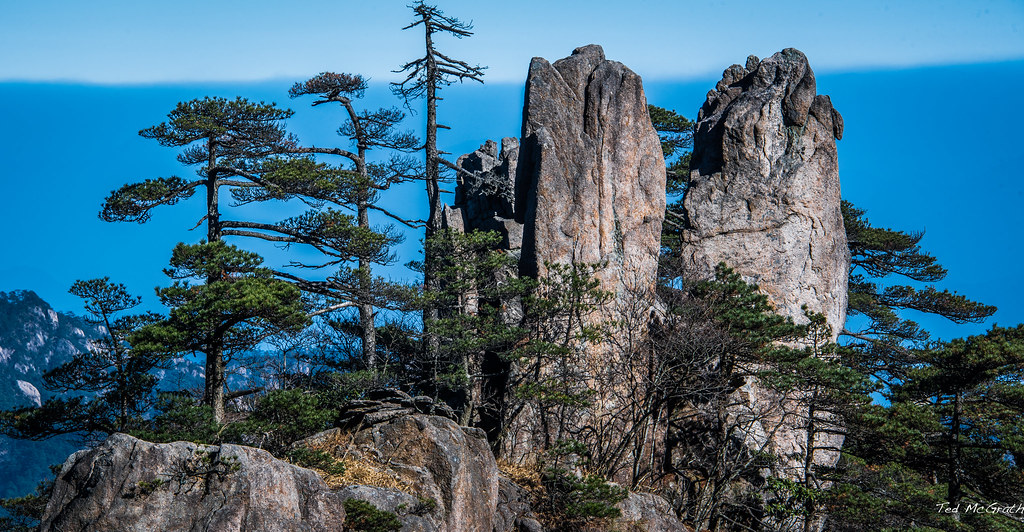
The pines of Huangshan are survivors. They grow directly from granite rock. Their roots twist and grasp the stone. Whipped by wind for centuries, they grow in dramatic, horizontal shapes. Each pine has a name and a story. The most famous is the Greeting-Guest Pine. It is over 1,000 years old and a symbol of Chinese hospitality.
2. Absurd Rocks (怪石, Guài Shí)
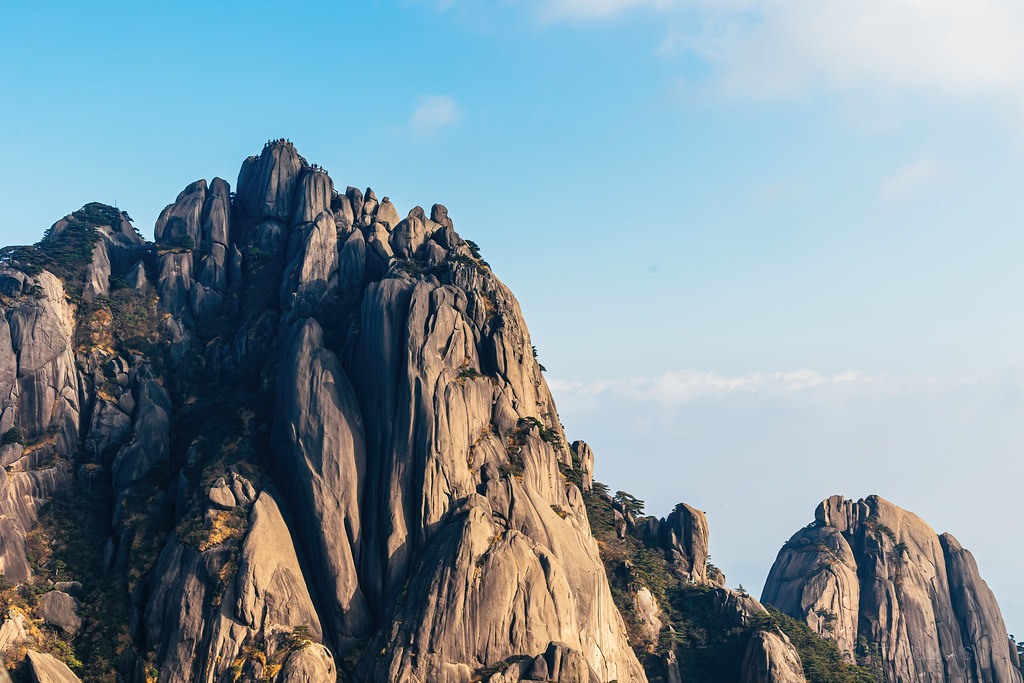
Glaciers and erosion have sculpted Huangshan’s granite peaks. They have been shaped into incredible forms. With a little imagination, you can see them too. “Monkey Gazing at the Sea.” “Flying-Over Rock.” “The Immortal Pointing the Way.” These formations are not just geological curiosities. They are part of the mountain’s mythology.
3. Sea of Clouds (云海, Yún Hǎi)
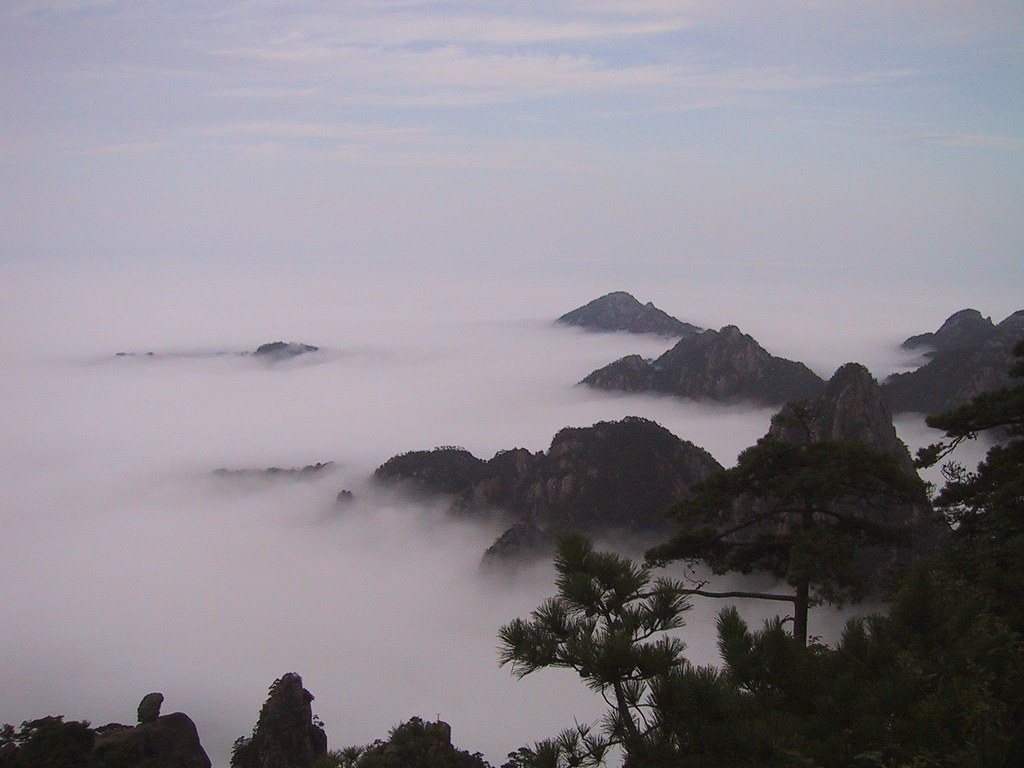
This is perhaps Huangshan’s most famous spectacle. Due to its unique geography, clouds often form in the valleys below the peaks. This creates a vast, ethereal “sea” of clouds. The granite peaks rise from it like islands. The view is constantly changing. It appears and disappears with the wind. To witness the Sea of Clouds is an unforgettable, almost spiritual experience. It is most common from November to May.
4. Hot Springs (温泉, Wēn Quán)
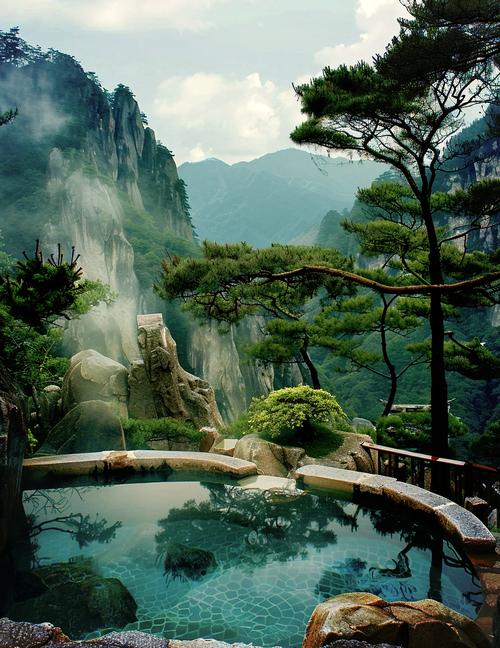
At the foot of the mountain lies the Huangshan Hot Springs. According to legend, the Yellow Emperor bathed here and became younger. The springs maintain a temperature of around 42°C () all year. Soaking in these mineral-rich waters is the perfect way to soothe your muscles after a long day of hiking. It is considered the fourth, and most relaxing, wonder.
Many now also add a fifth wonder: Winter Snow (冬雪, Dōng Xuě). When snow covers the peaks and pines, Huangshan transforms into a silent, crystalline world. It is a breathtaking sight for those who brave the cold.
Highlights: Must-See Spots on Mount Huangshan
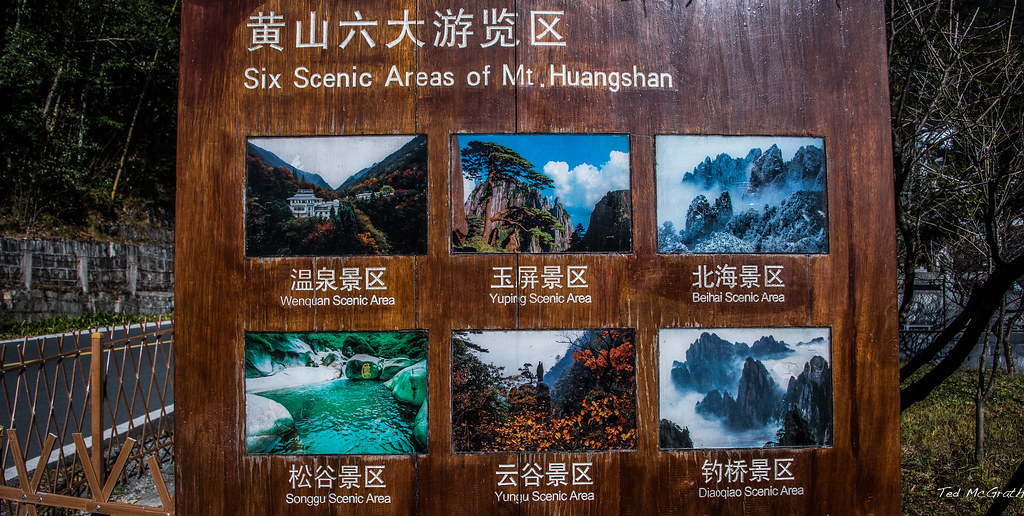
The mountain is vast. It’s easy to feel overwhelmed. We’ve broken down the key highlights by area to help you navigate. Most visitors spend one or two days here.
Front Mountain (Qianshan) – The Grand Entrance
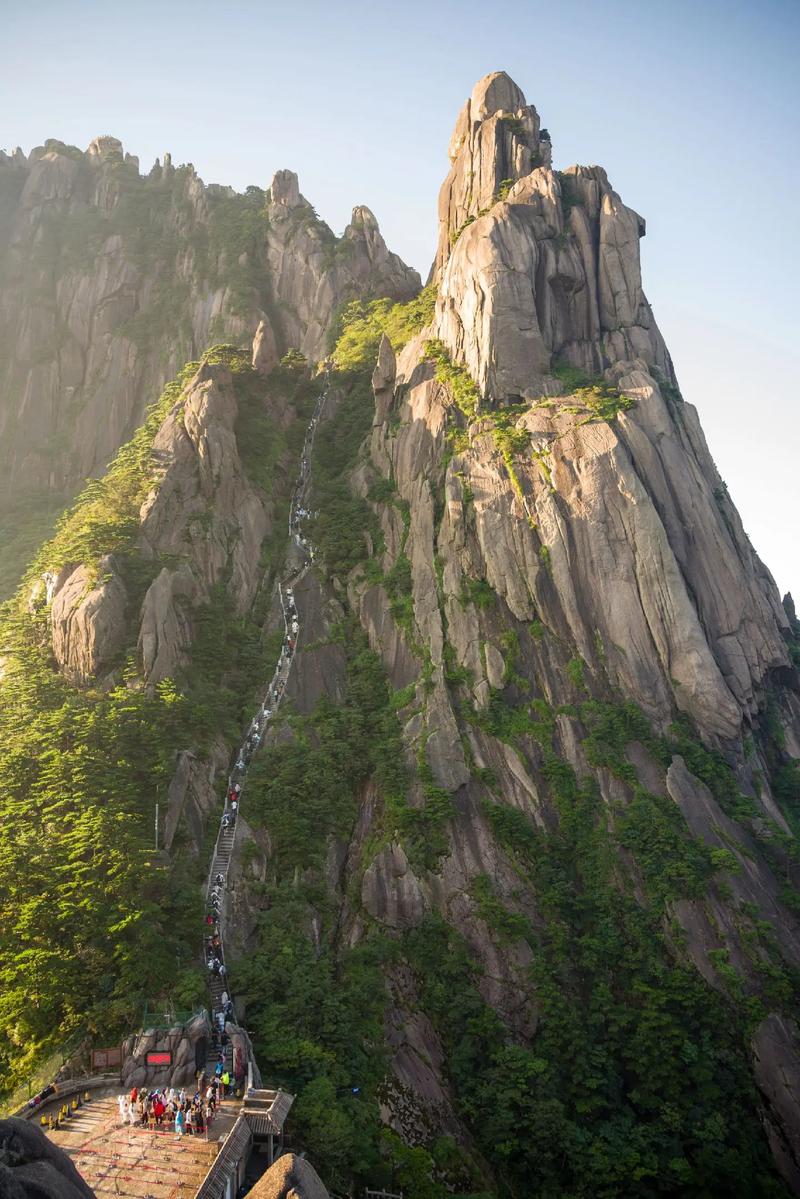
The Front Mountain is known for its majestic and imposing scenery. The trail is steeper with more challenging stairs.
- Greeting-Guest Pine (迎客松, Yíng Kè Sōng): Located near the Yuping (Jade Screen) Pavilion, this is the most famous tree in China. Its long branch stretches out like an arm in welcome. It is a must-see photo spot.
- Lotus Peak (莲花峰, Lián huā Fēng): The highest point on the mountain. The climb is strenuous but the 360-degree views are worth every step. Note: Lotus Peak and Celestial Capital Peak open on a rotating basis (every 3-5 years) for conservation. As of late 2025, Lotus Peak is expected to be open. Always verify this before your trip.
- Celestial Capital Peak (天都峰, Tiān Dū Fēng): The most thrilling and steepest peak. Its famous “Carp’s Backbone” is a narrow, precipitous ridge. It offers an adventurous climb for those with a good head for heights. It is currently closed for conservation and expected to reopen around 2026-2027.
Back Mountain (Houshan) – The Serene Beauty
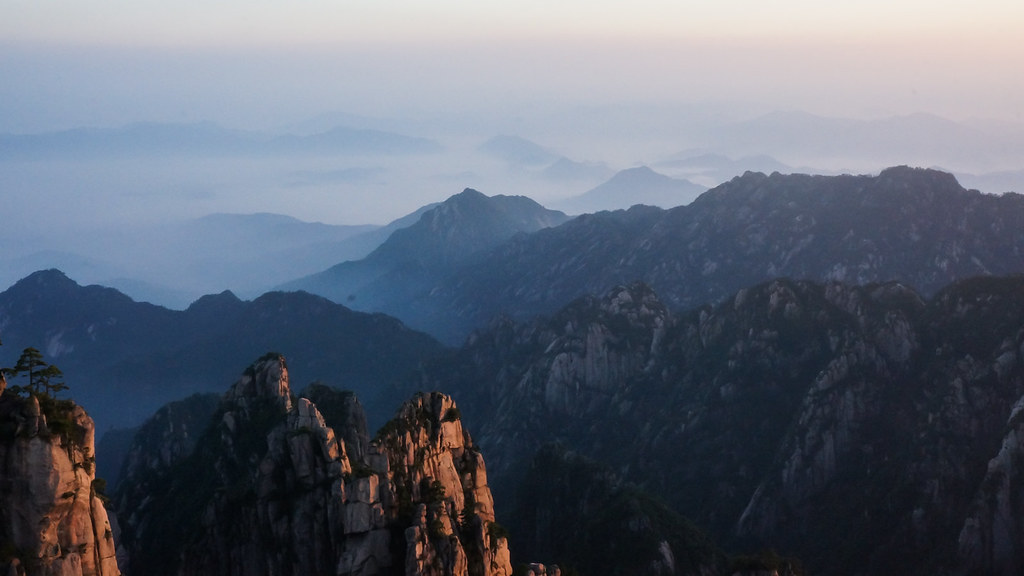
The Back Mountain offers more delicate and serene landscapes. It is generally considered an easier hike than the Front Mountain.
- Begin-to-Believe Peak (始信峰, Shǐ Xìn Fēng): A classic viewing area. It’s famous for its concentration of elegant pines and unique rock formations. The name comes from an ancient visitor who was skeptical of Huangshan’s beauty until he reached this spot. Then, he “began to believe.”
- Lion Peak (狮子峰, Shīzi Fēng): This peak is known for its shape, resembling a crouching lion. It is home to the Refreshing Terrace, one of the very best locations for watching the sunrise over the Sea of Clouds.
- Monkey Gazing at the Sea (猴子观海, Hóuzi Guān Hǎi): A famous rock formation on a distant peak that looks exactly like a monkey sitting and looking out over the clouds.
West Sea Grand Canyon (西海大峡谷, Xīhǎi Dàxiágǔ) – The Adventurer’s Dream
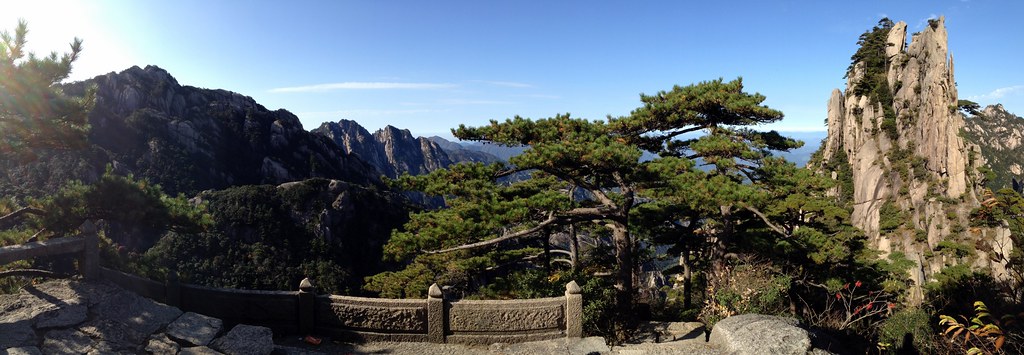
This is our team’s favorite part of Huangshan. It’s a newer area, opened to tourists in 2001. Many tour groups skip it due to time. This is a mistake.
The canyon offers the most breathtaking and wild scenery on the mountain. You descend into a deep gorge on narrow stone steps carved into the cliffside. The views are simply mind-blowing. The full loop takes about 3-4 hours and is very demanding. But it’s an experience that will stay with you forever.
Special Experience: Hiking the West Sea Grand Canyon Loop
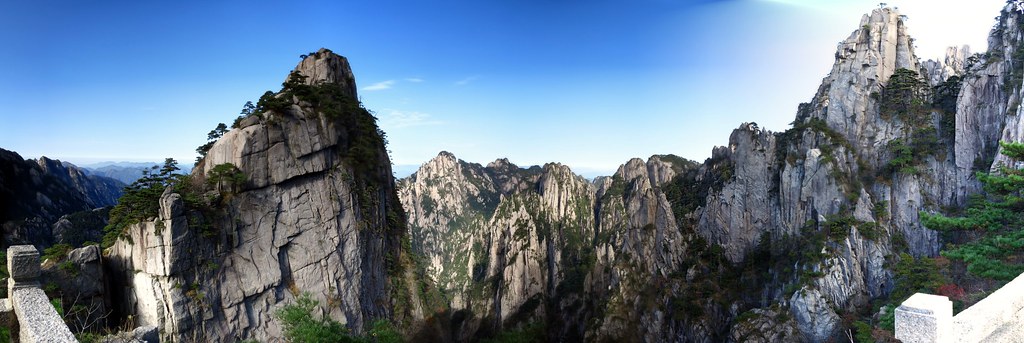
We highly recommend dedicating half a day to this. Start from Dispelling Cloud Pavilion. Hike down into the 1st Ring and continue to the 2nd Ring. The paths are narrow. The drops are steep. But the safety railings are excellent.
The scenery is otherworldly. You are surrounded by towering stone pillars and sheer cliffs. You feel truly immersed in the heart of the mountain.
After reaching the bottom of the valley, you don’t have to hike back up. You can take the Xihai’gUānguāng Dìlǎn (West Sea Valley Sightseeing Cableway). This monorail zips you back up the mountain in just a few minutes. It is an engineering marvel and offers stunning views on the way. This makes the canyon accessible to more people.
How to Visit: Routes and Cable Cars

PS: The red route shown in the image represents our recommended standard itinerary.
There is no single “right” way to visit Huangshan. Your route depends on your fitness level and time. Most visitors use a combination of hiking and cable cars.
Common Hiking Routes
- The Classic Route (Less Strenuous): Take the Yungu Cableway up (Back Mountain). Hike past Begin-to-Believe Peak and stay overnight near Bright Top. Watch the sunrise. Then, hike down the Front Mountain and take the Yuping Cableway down. This route maximizes scenery with manageable effort.
- The Adventurer’s Route (More Strenuous): Take the Yuping Cableway up (Front Mountain). Challenge yourself by climbing Lotus Peak. Stay overnight. Explore the West Sea Grand Canyon the next day. Descend via the Yungu Cableway. This is for fit and experienced hikers.
Cable Cars: Your Best Friend on the Mountain
There are three main cable car lines. They save you hours of grueling climbing on less scenic sections. We almost always recommend using them to save your energy for the stunning summit areas.
Cable Car Name | Location | Route | Travel Time | Key Notes |
|---|---|---|---|---|
Yungu Cableway (云谷索道) | Back Mountain | Yungu Temple to White Goose Ridge | Approx. 10 mins | Most popular and frequently used. Accesses the easier Back Mountain trails. |
Yuping Cableway (玉屏索道) | Front Mountain | Mercy Light Temple to Jade Screen Pavilion | Approx. 8 mins | Takes you directly to the Greeting-Guest Pine. The ascent is very steep and dramatic. |
Taiping Cableway (太平索道) | North Gate | Pine Valley Nunnery to Pine Forest Peak | Approx. 11 mins | Longest cableway with large cabins (holds 100 people). Less crowded, but far from the main southern entrance. |
Best Time to Visit Mount Huangshan
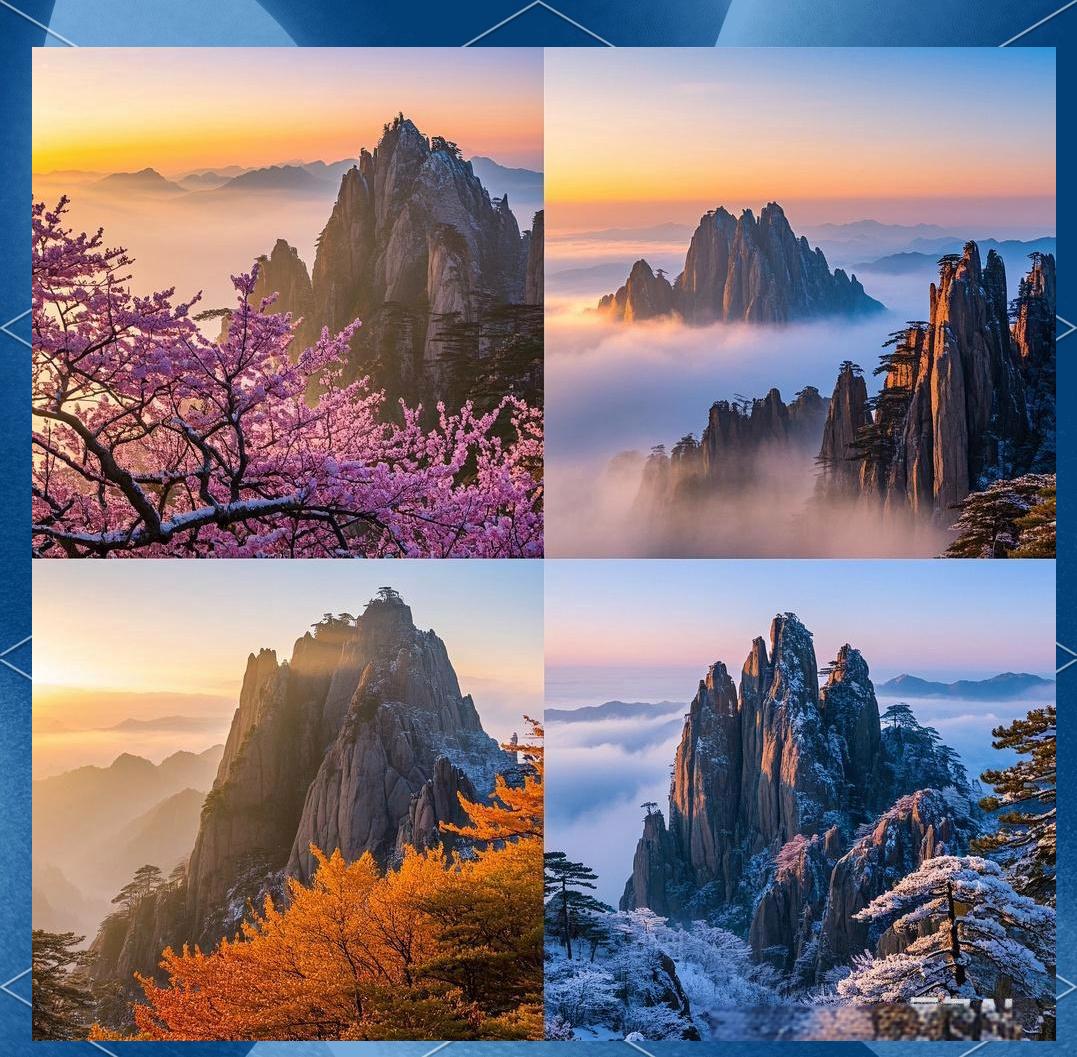
Huangshan is beautiful in every season. The best time depends on what you want to see.
- Spring (March to May): The mountain awakens. Fresh green leaves appear. Flowers like the Huangshan azaleas bloom. Weather is pleasant but can be very foggy and rainy. The Sea of Clouds is common.
- Summer (June to August): Lush and green. The mountain is a cool escape from the heat in the cities. This is peak season. Expect large crowds, especially during school holidays in July and August. Be prepared for rain.
- Autumn (September to November): This is arguably the best season. The weather is dry and stable. The skies are clear, offering high visibility and stunning views. The autumn foliage adds beautiful splashes of color. Crowds are heavy, especially during the National Day holiday (first week of October).
- Winter (December to February): A magical time. The mountain is covered in snow and ice rime. It is quiet and uncrowded. The Sea of Clouds is very frequent. It’s cold, so you must have proper gear (warm layers, crampons for your shoes). Hotels on the mountain remain open.
Planning Your Visit (2025 Logistics)
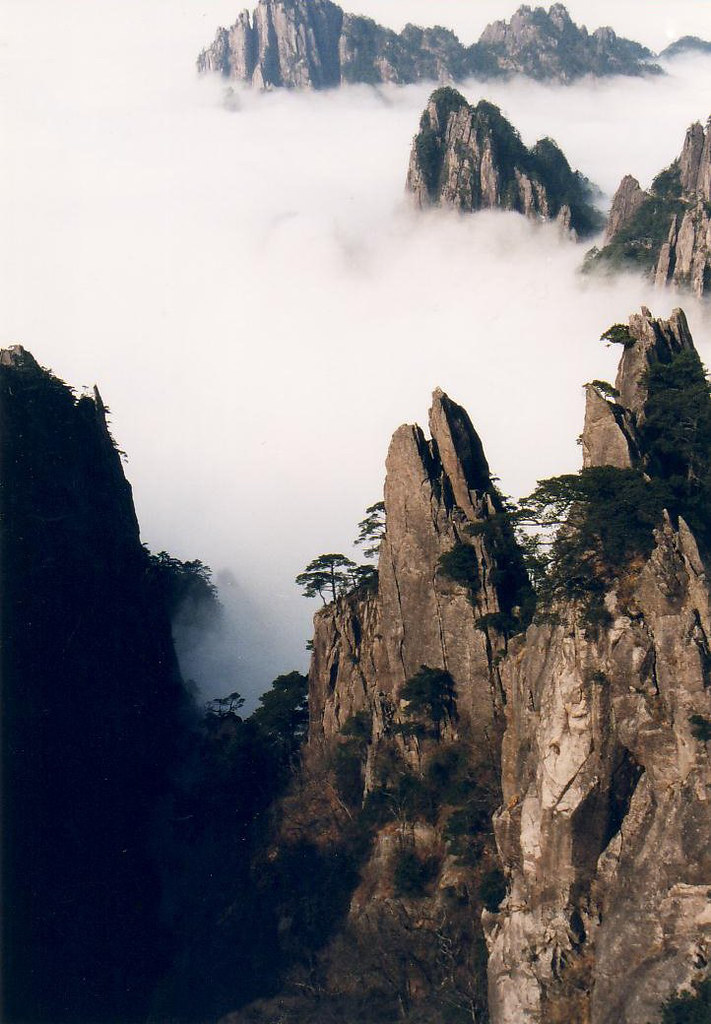
Proper planning is key to a successful Huangshan trip. Here is the latest practical information.
Getting There
Mount Huangshan is located in Anhui province. The main gateway is Huangshan City (also called Tunxi).
- By Air: Huangshan Tunxi International Airport (TXN) has flights from major cities like Beijing, Shanghai, Guangzhou, and Xi’an. From the airport, it’s about a 1-hour drive to the base of the mountain (Tangkou Town).
- By High-Speed Train: This is the best option. The Huangshan North Railway Station is a major hub.
- From Shanghai: Approx. 2.5 – 3 hours.
- From Hangzhou: Approx. 1.5 – 2 hours.
- From Beijing: Approx. 5.5 – 7 hours.From the train station, you can take a bus or taxi (about 45-60 minutes) to Tangkou Town.
- From Tangkou Town: This is the service town at the mountain’s base. All visitors must take a mandatory shuttle bus from here to the cable car stations or hiking trailheads.
Opening Hours and Tickets
Prices and hours can change. Always check the official source before your trip. The information below is based on the latest available for 2025 planning.
Item | Price (CNY ¥) – Peak Season* | Price (CNY ¥) – Off Season* | Notes |
|---|---|---|---|
Entrance Fee | ¥190 | ¥150 | Required for entry into the scenic area. |
Yungu Cableway | ¥80 (one way) | ¥65 (one way) | Highly recommended. |
Yuping Cableway | ¥90 (one way) | ¥75 (one way) | Offers dramatic views of the Front Mountain. |
Taiping Cableway | ¥80 (one way) | ¥65 (one way) | Less common route from the north gate. |
West Sea Monorail | ¥100 (one way) | ¥80 (one way) | Essential for exploring the Grand Canyon. |
Shuttle Bus | ¥19 (one way) | ¥19 (one way) | Mandatory transfer from Tangkou to the entrance. |
*Peak Season is typically March 1 to November 30. Off Season is December 1 to February 28. Prices are for adults and are subject to change.
Important: You must bring your passport. Tickets are now linked to your identity. We strongly advise booking your entrance ticket online in advance, especially during holidays, as there is a daily capacity limit.
Practical Travel Tips from Our Experts
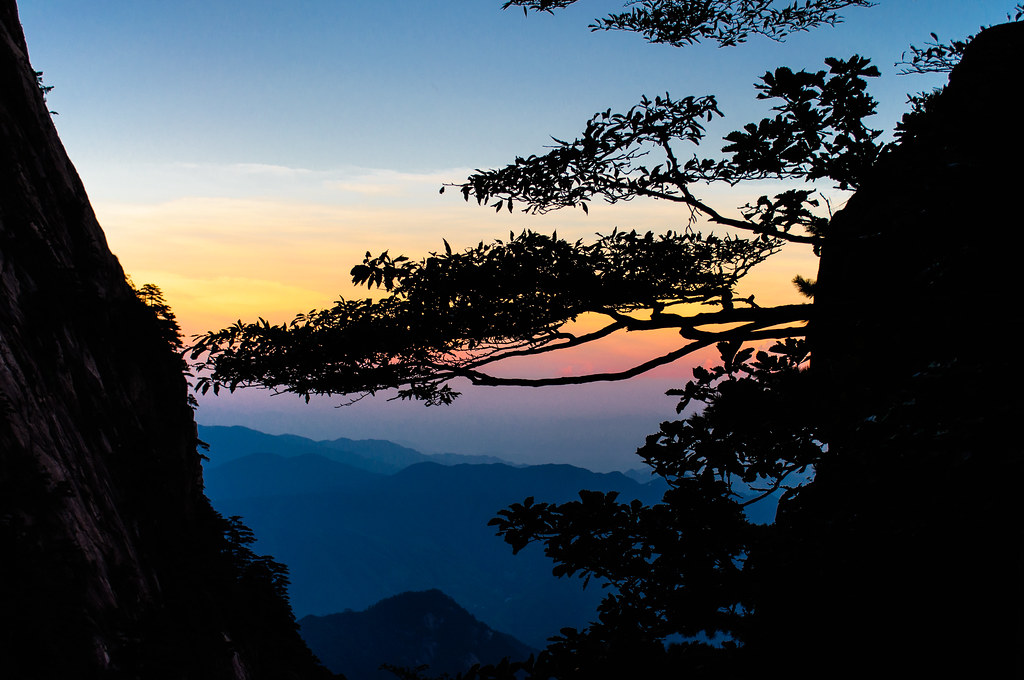
- Pack Light, But Smart: If staying overnight, pack only what you need in a backpack. You will carry it up the mountain. Essentials include water, high-energy snacks, a portable charger, and a rain poncho (better than an umbrella).
- Wear Layers: The weather changes rapidly. A waterproof and windproof jacket is crucial, even in summer.
- Good Footwear is a Must: Wear comfortable hiking shoes with good grip. The stone steps can be slippery when wet.
- Stay Overnight for the Full Experience: Seeing both sunset and sunrise from the summit is the ultimate Huangshan experience. Hotels on the mountain are basic and expensive, but the location is priceless. Book well in advance.
- Don’t Underestimate the Stairs: There are over 60,000 stone steps. Be prepared for a lot of climbing and descending. Using a walking stick can be very helpful for your knees.
- The “Love Locks”: You will see railings covered in padlocks. Couples engrave their names on a lock, fix it to the chains, and throw the key into the valley. This symbolizes their wish for eternal love.
- Check the Weather Forecast: But don’t trust it completely. The mountain creates its own weather. Be prepared for anything.
Real Traveler Reviews: What Our Guests Say
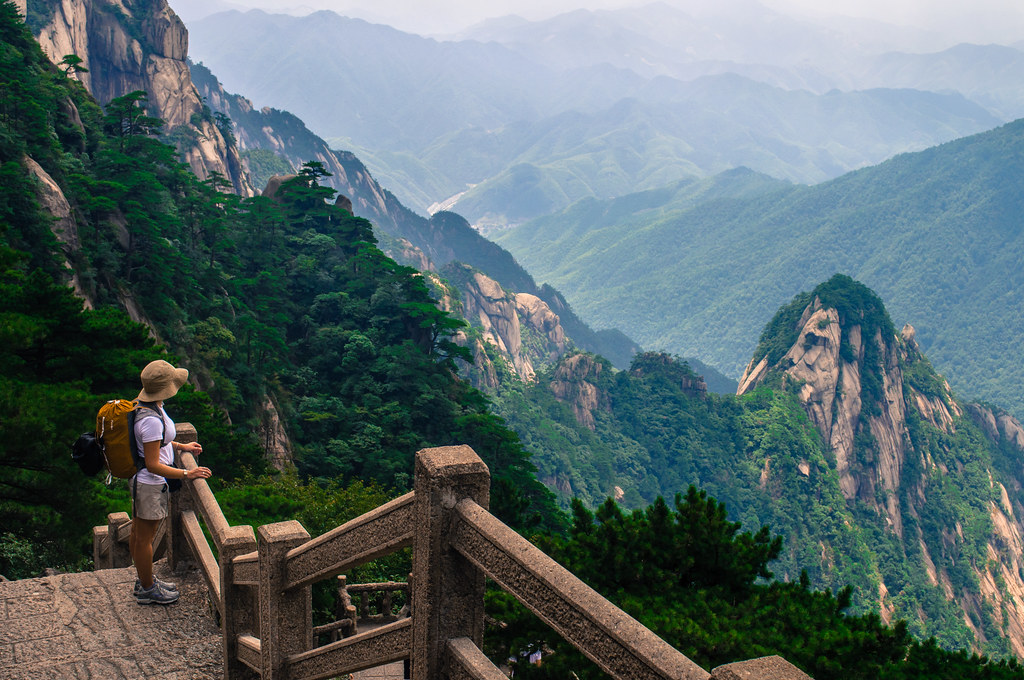
We love hearing from our travelers after their trip. Here are some common things they tell us about Huangshan:
“I’ve seen photos for years, but nothing prepares you for the Sea of Clouds in person. It was like floating in another world. The sunrise from Bright Top was the highlight of my entire China trip.” – Sarah from Australia
“Listen to the advice and pack light! We stayed overnight and my backpack felt like it was full of bricks by the end. But it was so worth it. The West Sea Grand Canyon was tough but absolutely spectacular.” – Mark from the UK
“Be prepared for the crowds, especially around the main sights. But a short walk away from the main path, you can find quiet moments. It is physically demanding, but the scenery is your reward. My legs were sore for days, but my memories will last a lifetime.” – Javier from Spain
Frequently Asked Questions (FAQ)
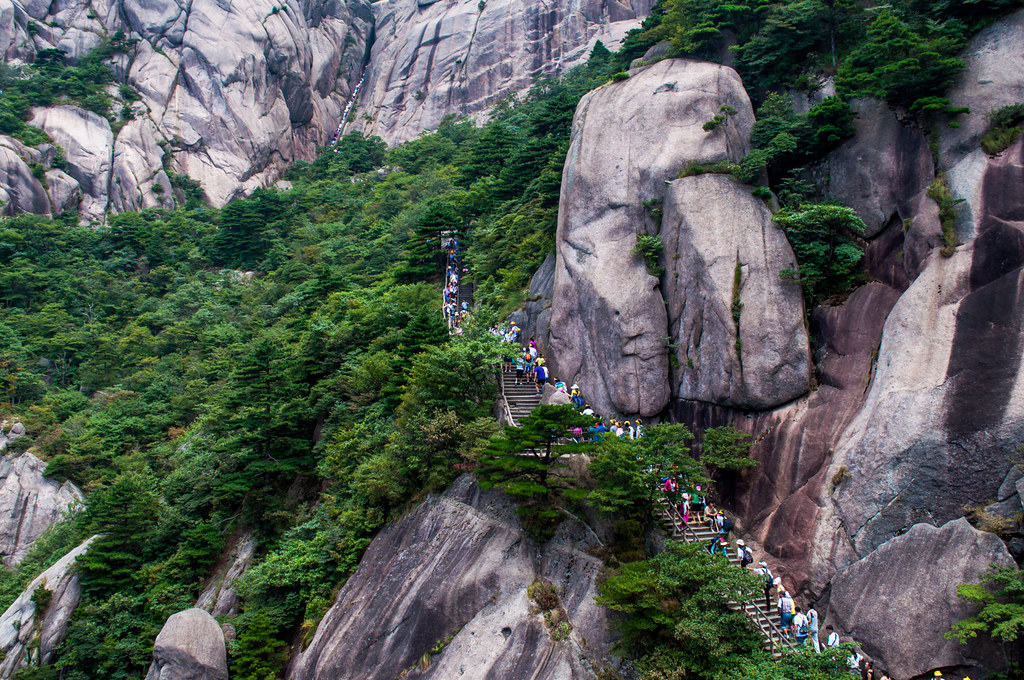
Q1: How many days do I need for Mount Huangshan?
We recommend two full days. This allows you to explore both the Front and Back Mountains, hike the West Sea Grand Canyon, and see both sunset and sunrise without rushing. A single day is possible but very rushed.
Q2: Is Mount Huangshan difficult to climb?
It can be very challenging due to the thousands of steep stairs. It is not a technical climb, but it requires a good level of physical fitness. Using the cable cars makes it accessible to most people with average fitness.
Q3: Can I visit Mount Huangshan without a guide?
Yes, it is possible. The paths are well-marked in Chinese and English. However, a guide adds immense value. They can manage logistics, share the stories behind the scenery, and take you to the best viewing spots at the right times, away from the biggest crowds.
Q4: Are there porters available?
Yes. You will see porters carrying supplies and luggage up the mountain on bamboo poles. They can be hired at the base of the mountain if you need help with your bags.
Q5: What are the hotels like on the summit?
The hotels on top of the mountain are functional but expensive for their quality level. You pay for the incredible location. Rooms are simple, and food options are limited. We recommend booking a standard room at hotels like Xihai Hotel or Beihai Hotel.
A Personal Note from Our Team at Travel China With Me
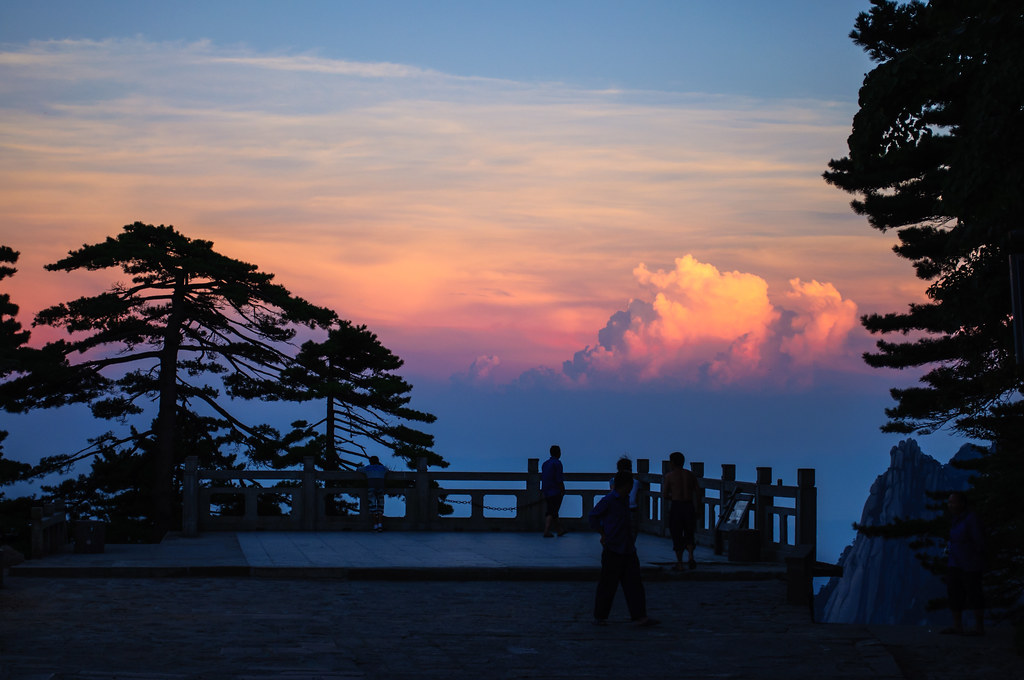
We have walked the steps of Huangshan in the spring mist and under the clear autumn sky. We’ve watched the sun paint the Sea of Clouds gold and felt the profound silence of its snow-covered peaks in winter. This mountain is a special place for us, and it’s a place we are passionate about sharing.
Huangshan is more than a destination; it’s a journey. It challenges your body but rewards your spirit. It connects you to centuries of Chinese art, poetry, and philosophy. It reminds you of the raw, powerful beauty of the natural world.
Planning a trip to a place this grand can be complex. That’s where we come in. We handle the logistics—tickets, transport, lodging—so you can focus on the experience. Let us help you craft your own perfect Huangshan story.
Ready to walk among the clouds? Contact us to start planning your Mount Huangshan adventure.
READ ALSO: Top 10 Mountains in China: Majestic Peaks You Must Explore


